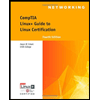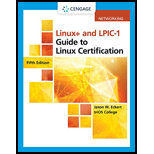Write the command that can be used to perform the following: Back up the contents of the /var directory (which contains symbolically linked files) to the second nonrewinding SCSI tape device on the system using the tar utility. Append the file /etc/inittab to the archive created in Exercise 2a. Create a tarball called /stuff.tar.gz that contains all files in the /root/stuff directory. Use the cpio utility to back up all files in the /var directory (which contains symbolically linked files) to the first rewinding IDE tape device that has a block size of 5KB. Perform a full filesystem backup of the /var filesystem using the dump utility and record the event in the /etc/dumpdates file. Create an image of the /dev/sdb4 filesystem to the /sdb4.img file. View the contents of the archives created in Exercises 2a, 2c, 2d, and 2e. Extract the contents of the archives created in Exercises 2a and 2c to the /root directory. Extract the contents of the archives created in Exercises 2d and 2e to their original locations. Restore the image of the /dev/sdb4 filesystem created in Exercise 2f.
Write the command that can be used to perform the following:
-
Back up the contents of the /var directory (which contains symbolically linked files) to the second nonrewinding SCSI tape device on the system using the tar utility.
-
Append the file /etc/inittab to the archive created in Exercise 2a.
-
Create a tarball called /stuff.tar.gz that contains all files in the /root/stuff directory.
-
Use the cpio utility to back up all files in the /var directory (which contains symbolically linked files) to the first rewinding IDE tape device that has a block size of 5KB.
-
Perform a full filesystem backup of the /var filesystem using the dump utility and record the event in the /etc/dumpdates file.
-
Create an image of the /dev/sdb4 filesystem to the /sdb4.img file.
-
View the contents of the archives created in Exercises 2a, 2c, 2d, and 2e.
-
Extract the contents of the archives created in Exercises 2a and 2c to the /root directory.
-
Extract the contents of the archives created in Exercises 2d and 2e to their original locations.
-
Restore the image of the /dev/sdb4 filesystem created in Exercise 2f.
Trending now
This is a popular solution!
Step by step
Solved in 2 steps






